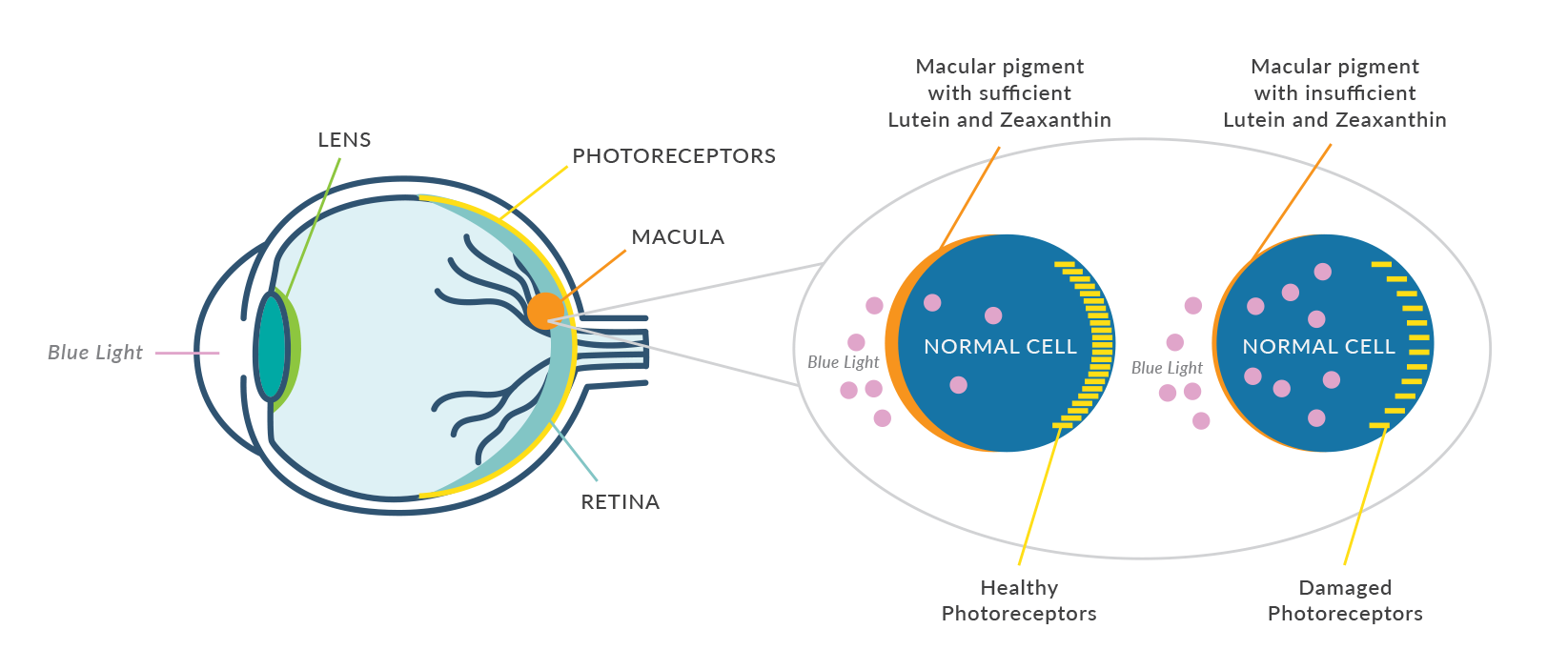MPOD Measurement
Macular pigment is a protective layer deep in the retina that’s responsible for protecting the delicate photoreceptors. A great analogy is to think of the macular pigment like internal sunglasses, absorbing harmful light before it can reach these fragile visual cells. Additionally, these internal sunglasses help to improve patients’ visual functions when healthy, including:

Visual Acuity

Contrast Sensitivity

Light Sensitivity

Glare Recovery

Photostress Recovery

Visual Processing Speed
What Is a Healthy Macular Pigment?
Healthy, or dense, macular pigment is best equipped for protecting and enhancing vision. Everyone is born with a certain amount of macular pigment optical density (MPOD), but it can degrade over time if it’s not supported. Patients can support and even increase their MPOD by increasing their intake of the dietary carotenoids that make up the macular pigment – zeaxanthin and lutein.

What Does MPOD Tell Me?
MPOD is a biomarker for several eye health issues, including:

Age-related eye health issues

Eye health related to diabetes

Night driving issues

Glare and light sensitivity issues

Potential blue light damage
But it doesn't stop at eye health.
Because the eyes are an extension of the brain and both zeaxanthin and lutein are found in the brain, MPOD is also a biomarker for cognitive issues, including trouble with memory, focus, and decision-making.

How Do I Measure MPOD?
There are several ways to measure MPOD, but the most extensively used and researched method that’s available and affordable for practitioners is heterochromatic flicker photometry (HFP). This ocular measurement is based on the macular pigment’s absorption spectrum at the macula and fovea. As mentioned, the macular pigment is made up of zeaxanthin and lutein, so this method of measurement helps to directly determine the amount of these critical antioxidants in the eye.
MPOD is determined by alternating between a short-wavelength blue light and a longer-wavelength green-yellow light, which the exam recipient perceives as a flicker through a direct ocular intake. The blue light is absorbed by macular pigment, whereas the green light is not. The exam recipient is to indicate when the target is flickering. MPOD is determined by comparing the amount of blue light needed at the fovea (high concentration of macular pigments) and the parafovea (low concentration of macular pigments) to perceive a flicker.

The HFP method has been demonstrated to have a high agreement with fundus reflectometry, an expensive, objective measurement typically used only in research. When measuring MPOD in this method, patients receive a numerical score between 0.0 and 1.0 that correlates with the density of their macular pigment. The denser their pigment, the higher their score (1.0 is high), with optimal MPOD scores being a 0.5 or higher. However, 78% of the country is below optimal, with the U.S. average MPOD score being 0.34.

How Can My Patients Increase Their MPOD Score?
As mentioned, macular pigment is made up of 2 dietary carotenoids, zeaxanthin and lutein. By increasing their daily intake of these two antioxidants, patients can help support and increase their MPOD. However, these two nutrients can be difficult to get through diet alone, so many eye care professionals prescribe nutraceuticals. EyePromise® is the only line of ocular nutraceuticals guaranteed to increase MPOD in 6 months.
How Can I Incorporate MPOD Testing In My Practice?
Want more science behind MPOD measurement? Get all the clinical data here.


